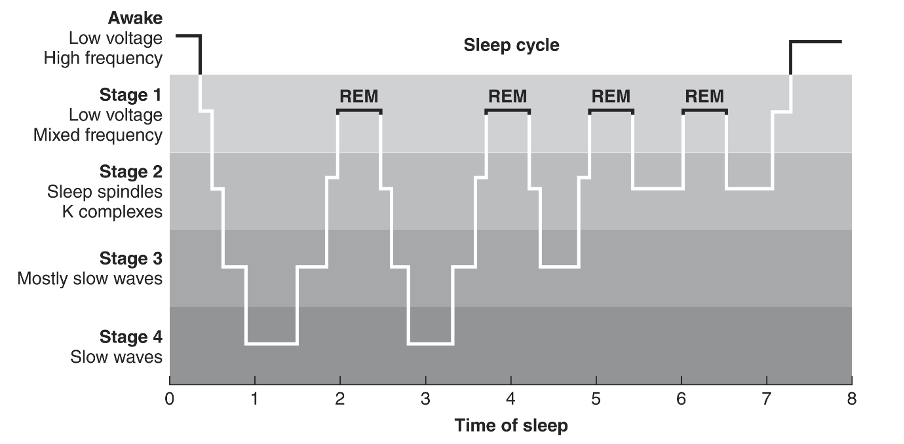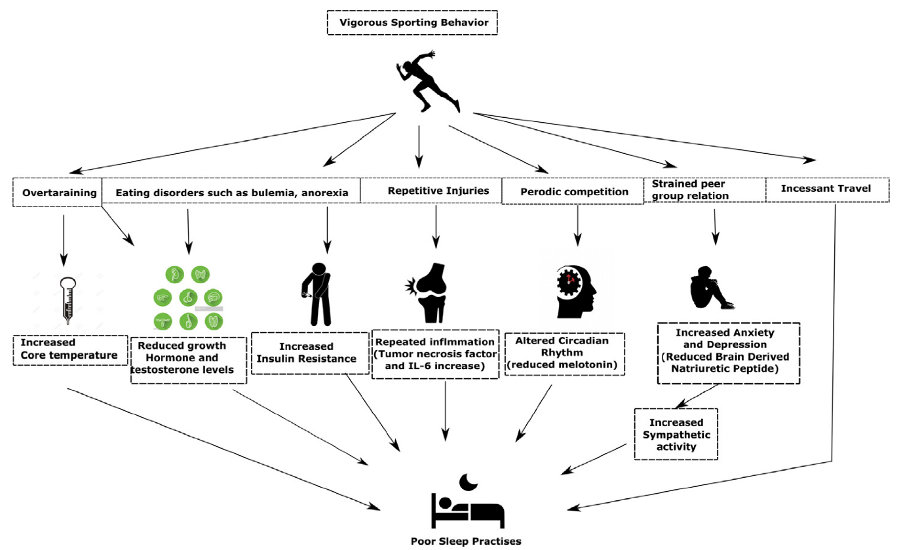Sleep, Sleep Deprivation & The Role of Napping: A Brief Introduction
Sleep is an essential component in the ability to achieve peak performance due to its integral role in the restoration and recovery processes. Sleep is regarded as an active regulatory process & facilitates the proper functioning of the brain & cognitive performance.

Sleep & The Sleep Cycles
Sleep is an essential component in the ability to achieve peak performance due to its integral role in the restoration and recovery processes (Fullagar et al., 2015a; Fullagar et al., 2015b; LaGoy et al., 2020; Halson, 2013). Sleep is regarded as an active regulatory process (Hobson, 2005) and facilitates the proper functioning of the brain and cognitive performance while also regulating physiological functions including substrate and energy metabolism (VanHelder, Symons and Radomski, 1993; Chua et al., 2015; Penev, 2007), cardiovascular function (Trinder et al., 2012; Vaara et al., 2009), appetite (Spiegel et al., 2004), endocrine function (Scheer et al., 2009; Spiegel, Leproult and Van Cauter, 1999) and immune function (Santos, Tufik and De Mello, 2007). This is corroborated by Frank and Benington (2006), who hypothesised several facilitating theories for sleep including the regeneration of immune and endocrine function, the nervous system and metabolic cost of living, and aids in cognitive development and synaptic plasticity.
Sleep is organised into multiple 90-minute series of one rapid-eye-movement (REM) and four non-REM sleep phases which are defined by eye-movement, brain activity and blood pressure (Figure 1) (Carskadon and Dement, 2005; Le Meur, Duffield and Skein, 2012). Non-REM sleep functions to support the regeneration of the nervous system, conserve energy, release anabolic hormones which augment protein synthesis to facilitate muscle recovery (Venter, 2012; Kraemer et al., 2020) and mobilise free-fatty acids for ATP production (Sassin et al., 1969). REM sleep facilitates neurological regeneration, learning, memory and emotional regulation (Siegel, 2005; Carskadon and Dement, 2005; Stickgold, 2005).

Figure 1: Sleep stages adapted from Le Meur, Duffield and Skein (2012).
Sleep Deprivation
Despite the importance of sleep for performance, poor sleep habits (Figure 2) are seen in athletes (Van Dongen et al., 2003). These poor habits have been attributed to acute spikes in training load (Watson et al., 2017; Pitchford et al., 2017), travel between time-zones (Waterhouse, Reilly and Edwards, 2004), the timing of training (Sargent et al., 2014) and evening competition times (Sargent and Roach, 2016). Furthermore, the psycho-physiological load of competition can negatively affect sleep (Gupta, Morgan and Gilchrist, 2017; Erlacher et al., 2011; Juliff, Halson and Peiffer, 2015). For international athletes, travel between time-zones can alter circadian rhythms, resulting in jet lag and sleep disturbances (Waterhouse, Reilly and Edwards, 2004). One major sleep issue that can confound performance is sleep deprivation (SD). SD can be defined as prolonged periods (≥24 hours) of wakefulness (Fullagar et al., 2015b; Boonstra et al., 2007).

Figure 2: The influence of sport on poor sleep habits adapted from Chandrasekaran, Fernandes and Davis (2020).
Proposed Physiological Effects of Sleep Deprivation
Performance following SD has displayed diverse results within the literature (Hill et al., 1994; Fullagar et al., 2015b). SD has shown to negatively affect time to exhaustion (TTE) (Martin, 1981; Martin and Chen, 1984; Azboy and Kaygisiz, 2009), the mean distance of self-paced running (Oliver et al., 2009), force and power characteristics …











Responses